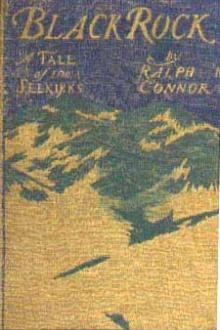The Desert of Wheat, Zane Grey [good non fiction books to read .TXT] 📗

- Author: Zane Grey
Book online «The Desert of Wheat, Zane Grey [good non fiction books to read .TXT] 📗». Author Zane Grey
"Bunt, or stinking smut, is caused by two different species of microscopic fungi which live as parasites in the wheat plant. Both are essentially similar in their effects and their life-history. Tilletia tritici, or the rough-spored variety, is the common stinking smut of the Pacific regions, while Tilletia foetans, or the smooth-spored species, is the one generally found in the eastern United States.
"The smut 'berries,' or 'balls,' from an infected head contain millions of minute bodies, the spores or 'seeds' of the smut fungus. These reproduce the smut in somewhat the same way that a true seed develops into a new plant. A single smut ball of average size contains a sufficient number of spores to give one for each grain of wheat in five or six bushels. It takes eight smut spores to equal the diameter of a human hair. Normal wheat grains from an infected field may have so many spores lodged on their surface as to give them a dark color, but other grains which show no difference in color to the naked eye may still contain a sufficient number of spores to produce a smutty crop if seed treatment is not practised.
"When living smut spores are introduced into the soil with the seed wheat, or exist in the soil in which smut-free wheat is sown, a certain percentage of the wheat plants are likely to become infected. The smut spore germinates and produces first a stage of the smut plant in the soil. This first stage never infects a young seedling direct, but gives rise to secondary spores, or sporida, from which infection threads may arise and penetrate the shoot of a young seedling and reach the growing point. Here the fungus threads keep pace with the growth of the plant and reach maturity at or slightly before harvest-time.
"Since this disease is caused by an internal parasite, it is natural to expect certain responses to its presence. It should be noted first that the smut fungus is living at the expense of its host plant, the wheat, and its effect on the host may be summarized as follows: The consumption of food, the destruction of food in the sporulating process, and the stimulating or retarding effect on normal physiological processes.
"Badly smutted plants remain in many cases under-size and produce fewer and smaller heads. In the Fife and Bluestem varieties the infected heads previous to maturity exhibit a darker green color, and remain green longer than the normal heads. In some varieties the infected heads stand erect, when normal ones begin to droop as a result of the increasing weight of the ripening grain.
"A crop may become infected with smut in a number of different ways. Smut was originally introduced with the seed, and many farmers are still planting it every season with their seed wheat. Wheat taken from a smutty crop will have countless numbers of loose spores adhering to the grains, also a certain number of unbroken smut balls. These are always a source of danger, even when the seed is treated with fungicides before sowing.
"There are also chances for the infection of a crop if absolutely smut-free seed is employed. First, soil infection from a previous smutty crop; second, soil infection from wind-blown spores. Experiments have shown that separated spores from crushed smut balls lose their effective power in from two to three months, provided the soil is moist and loose, and in no case do they survive a winter.
"It does not seem probable that wheat smut will be controlled by any single practice, but rather by the combined use of various methods: crop rotation; the use of clean seed; seed treatment with fungicides; cultural practices and breeding; and selection of varieties.
"Failure to practise crop rotation is undoubtedly one of the main explanations for the general prevalence of smut in the wheat-fields of eastern Washington. Even with an intervening summer fallow, the smut from a previous crop may be a source of infection. Experience shows that a fall stubble crop is less liable to smut infection than a crop following summer fallow. The apparent explanation for this condition is the fact that the summer fallow becomes infected with wind-blown spores, while in a stubble crop the wind-blown spores, as well as those originating from the previous crop, are buried in plowing.
"If clean seed or properly treated seed had been used by all farmers we should never have had a smut problem. High per cents. of smut indicate either soil infection or imperfect treatment. The principle of the chemical treatment is to use a poison which will kill the superficial spores of the smut and not materially injure the germinating power of the seed. The hot-water treatment is only recommended when one of the chemical 'steeps' is not effective.
"Certain cultural practices are beneficial in reducing the amount of smut in all cases, while the value of others depends to some extent upon the source of the smut spores. The factors which always influence the amount of smut are the temperature of the soil during the germinating period, the amount of soil moisture, and the depth of seeding. Where seed-borne spores are the only sources of infection, attention to the three factors mentioned will give the only cultural practices for reducing the amount of smut.
"Early seeding has been practised by various farmers, and they report a marked reduction in smut.
"The replowing of the summer fallow after the first fall rains is generally effective in reducing the amount of smut.
"Very late planting—that is, four or five weeks after the first good fall rains—is also an effective practice. Fall tillage of summer fallow, other than plowing, seems to be beneficial.
"No smut-immune varieties of wheat are known, but the standard varieties show varying degrees of resistance. Spring wheats generally suffer less from smut than winter varieties. This is not due to any superior resistance, but rather to the fact that they escape infection. If only spring wheats were grown our smut problem would largely disappear; but a return to this practice is not suggested, since the winter wheats are much more desirable. It seems probable that the conditions which prevail during the growing season may have considerable influence on the per cent of smut in any given variety."
When Dorn finished his discourse, to





Comments (0)